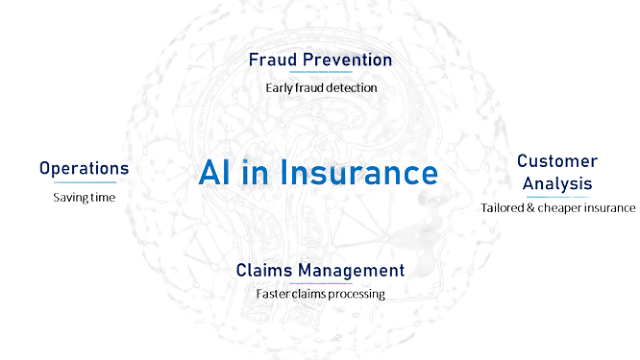The role of digital technologies, particularly artificial intelligence (AI) and machine learning (ML), in underwriting and risk assessment has become increasingly important in recent years. These technologies have the potential to transform the way insurance companies evaluate and manage risk, from the initial underwriting process to ongoing risk monitoring and management.
The impact of digital technologies, such as AI and ML, on the
underwriting and risk assessment process in the insurance industry. Learn how
these technologies are changing the way insurance companies evaluate and manage
risk, and the challenges and opportunities they present. Read our latest
insights on the role of AI and ML in underwriting and risk assessment.
One of the key benefits of AI and
ML in underwriting and risk assessment is the ability to process and analyze
large amounts of data much more quickly and accurately than humans can. This
can include information from a wide range of sources, such as financial data,
social media, and other digital footprints. By leveraging this data, insurance
companies can gain a much more comprehensive and accurate understanding of
potential risks, allowing them to make more informed decisions about which
risks to accept and which to reject.
Another key benefit of AI and ML
in underwriting and risk assessment is the ability to automate many routine
tasks and processes, freeing up time and resources for more complex and
value-adding activities. For example, AI and ML can be used to automate the
initial screening of applications, reducing the time and resources required for
manual review. This can improve efficiency and speed, as well as reducing the
risk of human error.
One of the key challenges of
using AI and ML in underwriting and risk assessment is ensuring that the
technologies are being used in a responsible and ethical manner. This includes
ensuring that the algorithms used are free from bias and discrimination, and
that the data being used is accurate and appropriate. It is also important to
ensure that the decisions being made by the technologies are transparent and
explainable, and that there is sufficient oversight and accountability.
In order to effectively leverage
AI and ML in underwriting and risk assessment, insurance companies will need to
invest in the development and implementation of robust and secure technology
systems. This will require significant investment in both technology and
talent, as well as a willingness to embrace new ways of working and a culture
of innovation.
In conclusion, the role of digital technologies, such as AI and ML, in underwriting and risk assessment has the potential to be a game-changer for the insurance industry. These technologies have the potential to significantly improve the efficiency and accuracy of the underwriting process, while also providing new insights and capabilities that were previously not possible. However, in order to effectively leverage these technologies, insurance companies will need to make significant investments in technology and talent, as well as embrace a culture of innovation and responsible use.




Post a Comment